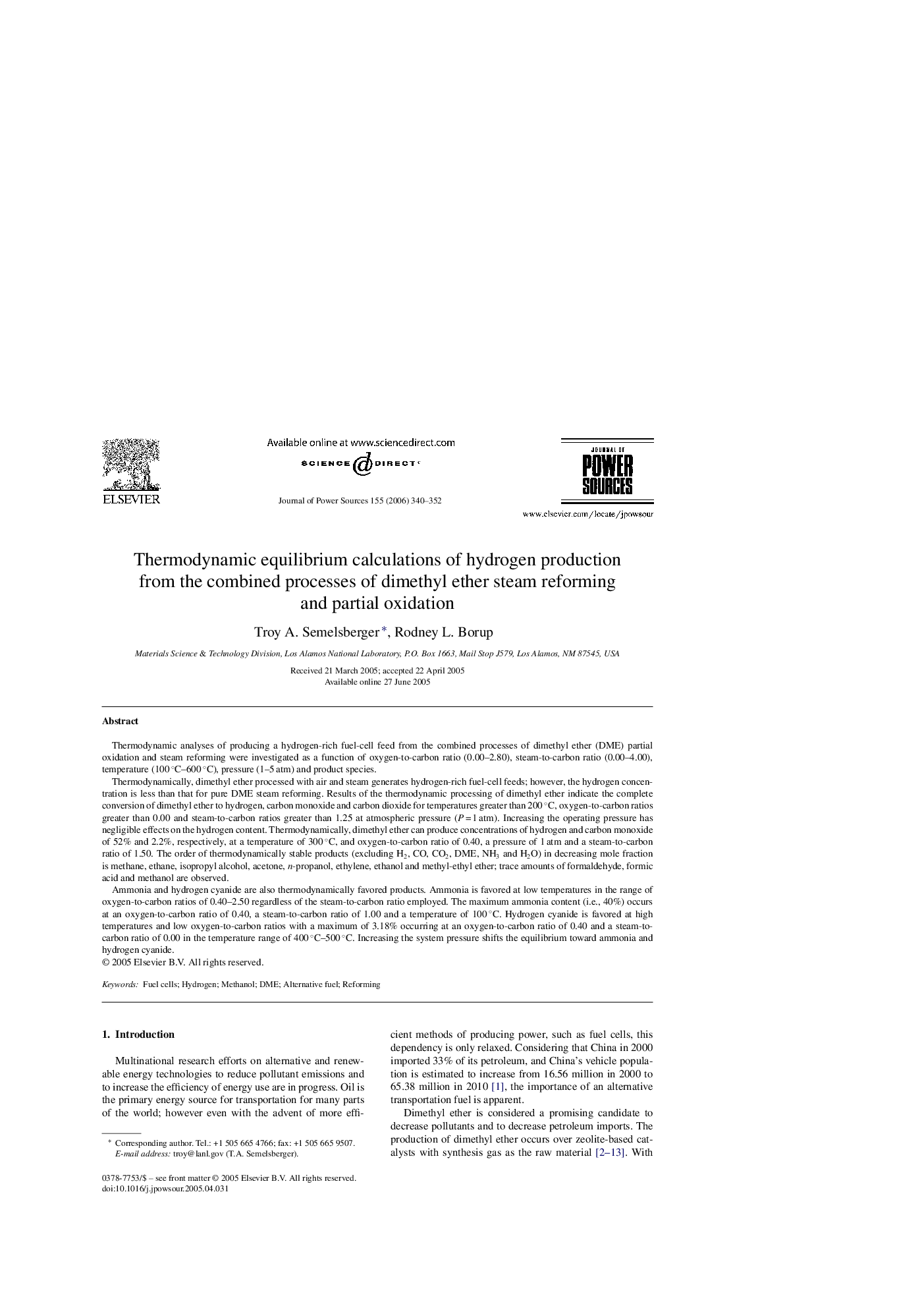| کد مقاله | کد نشریه | سال انتشار | مقاله انگلیسی | نسخه تمام متن |
|---|---|---|---|---|
| 1287910 | 973238 | 2006 | 13 صفحه PDF | دانلود رایگان |

Thermodynamic analyses of producing a hydrogen-rich fuel-cell feed from the combined processes of dimethyl ether (DME) partial oxidation and steam reforming were investigated as a function of oxygen-to-carbon ratio (0.00–2.80), steam-to-carbon ratio (0.00–4.00), temperature (100 °C–600 °C), pressure (1–5 atm) and product species.Thermodynamically, dimethyl ether processed with air and steam generates hydrogen-rich fuel-cell feeds; however, the hydrogen concentration is less than that for pure DME steam reforming. Results of the thermodynamic processing of dimethyl ether indicate the complete conversion of dimethyl ether to hydrogen, carbon monoxide and carbon dioxide for temperatures greater than 200 °C, oxygen-to-carbon ratios greater than 0.00 and steam-to-carbon ratios greater than 1.25 at atmospheric pressure (P = 1 atm). Increasing the operating pressure has negligible effects on the hydrogen content. Thermodynamically, dimethyl ether can produce concentrations of hydrogen and carbon monoxide of 52% and 2.2%, respectively, at a temperature of 300 °C, and oxygen-to-carbon ratio of 0.40, a pressure of 1 atm and a steam-to-carbon ratio of 1.50. The order of thermodynamically stable products (excluding H2, CO, CO2, DME, NH3 and H2O) in decreasing mole fraction is methane, ethane, isopropyl alcohol, acetone, n-propanol, ethylene, ethanol and methyl-ethyl ether; trace amounts of formaldehyde, formic acid and methanol are observed.Ammonia and hydrogen cyanide are also thermodynamically favored products. Ammonia is favored at low temperatures in the range of oxygen-to-carbon ratios of 0.40–2.50 regardless of the steam-to-carbon ratio employed. The maximum ammonia content (i.e., 40%) occurs at an oxygen-to-carbon ratio of 0.40, a steam-to-carbon ratio of 1.00 and a temperature of 100 °C. Hydrogen cyanide is favored at high temperatures and low oxygen-to-carbon ratios with a maximum of 3.18% occurring at an oxygen-to-carbon ratio of 0.40 and a steam-to-carbon ratio of 0.00 in the temperature range of 400 °C–500 °C. Increasing the system pressure shifts the equilibrium toward ammonia and hydrogen cyanide.
Journal: Journal of Power Sources - Volume 155, Issue 2, 21 April 2006, Pages 340–352